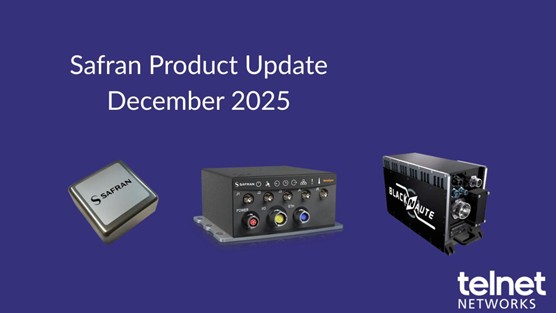Release 5.3.2 includes improved ‘AUTO’ configuration options for Layer-3 traffic and Wifi-Capacity plugin. Some initial HotSpot 2.0-R2 support. Improved 802.11 AC stability and features. Do better job of cleaning up stuck NFS mounts. Support 4.0.4 kernel and Fedora-21 to support the latest hardware and OS features.
This release provides Linux 4.0 kernel support, HotSpot 2.0-r2 authentication, and improves 802.11AC support.
Release 5.3.2 (July 31, 2015)
New Features & Improvements
- Layer-3: Support ‘AUTO’ payload size. This will select MTU sized frames for UDP, and will use 64k payloads for TCP and SCTP.
- Update to latest lib-curl and c-ares libraries (Feb 24, 2015)
- Update to latest iw, hostap, iproute2, iptables and related tools/libraries.
- Support Linux 4.0 kernel for latest drivers and features.
- Support Fedora-21 OS for latest applications and bug fixes.
- WiFi-HotSpot 2.0-R2: Support OSEN authentication methods.
- WiFi-HotSpot 2.0-R2: Support acting as HS20-R2 server-side. This requires Fedora 17 or higher OS, as well as some manual configuration.
- WiFi-HotSpot 2.0-R2: Support manual connection to HS20-R2 APs, including OSEN encryption, OSU display and selection, and 802.1x authentication with production AP.
- WiFi 802.11AC: Add support for tx/rx bps stats for 802.11AC Radio. Improve stat collection in general to better deal with firmware resetting the stats to zero when firmware restarts.
- WiFi 802.11AC: Improve WiFi channel activity reporting (requires 4.0 kernel).
- Support running radius server (using hostapd) on non-VAP interfaces. This helps make it easier to have LANforge manage some of the HS20 server side features. The .conf file must be hand-created by the user, and must be named: /home/lanforge/wifi/hostapd_.conf, for instance: /home/lanforge/wifi/hostapd_eth0#0.conf Select the ‘RADIUS’ service in the Port-Modify to enable.
- WiFi: Show 802.11AC and OSEN capabilities in the scan results table.
- WiFi: Support ADHOC (IBSS) mode with RSN encryption. Tested in both ath9k a/b/g/n radios and ath10k a/b/g/n/AC radios.
- WiFi: Support 801.11AC LANforge vAP in 40Mhz channel mode. For some reason, it often takes a second port reset 10+ seconds after changing after changing the vAP from HT80 to HT40 before the vAP works properly.
- WiFi: Fix problem where 802.11AC stations did not properly detect that an AP has become un-available.
- WiFi capacity plugin: Support concurrent UDP + TCP connections, add latency report graph, allow hiding most graphs for more concise reports.
- NFS: Attempt to cleanup stuck mount points. LANforge will kill any still-alive processes after 30 seconds of stopping the endpoints, and the same check will be made on (re)starting an Endpoint as well.
- This still does not fix all hangs, but it cleans up some of the problems at least.
- File-IO: Support opening files for writing with O_APPEND (instead of always using O_TRUNC). Default is still to use O_TRUNC.
- 2544 script: Enable ‘pps’ rate setting for Layer-3 connections. Previously, these only supported ‘bps’ rates. Configured speed is ‘low-level’ and tries to estimate the number of frames sent over the network device. This is often different from the ‘PDU per second’.
- Layer3 traffic: Fix tx/rx bytes and other counters when an endpoint using multi-conn > 0 is restarted due to network interface restart (or change of IP, etc).
- DHCP-Client: Add support for vendor-id (Option 60) for dhcp client requests. Also allow user to create custom dhcp client config files if more flexibility is needed.
- WiFi Capacity plugin: Add latency graphs, enable save/restore for configurations, enable UDP + TCP mix, enable ‘AUTO’ settings for most configurables.
- WiFi-Attenuator: Add plugin to programatically change attenuations to emulate a device moving relative to APs (ie, walking down the street). Includes reports from the LANforge AP on the station’s signal strength, tx/rx rates, and the configured attenuation. This should be helpful when testing how mobile phones deal with migrating from one AP to another, for instance.
Bug Fixes
- Fix UDP connections to properly auto-configure a reasonable sized send/receive buffer when ‘OS Default’ is selected. This worked long ago, but was broken when the ‘Same’ option was added for maximum-tx-rate. Tune the settings to work better with today’s networks and update GUI mouse-over to explain things better.
- Fix ANQP/GAS queries on 802.11ac (ath10k) wifi interfaces. The problem was a bug in the ath10k firmware that has now been fixed.
- Fix bug that broke multi-conn Layer-3 connections on the Management port.
- Fix Port-Reset plugin in LANforge-GUI.
- Fix bug where endpoints would not properly quiesce if a GUI was not connected. Endpoints now push a notification to controlling process if they quiesce, so the GUI polling is no longer required to propagate the state.
Thanks to Candela Tech for the article.





